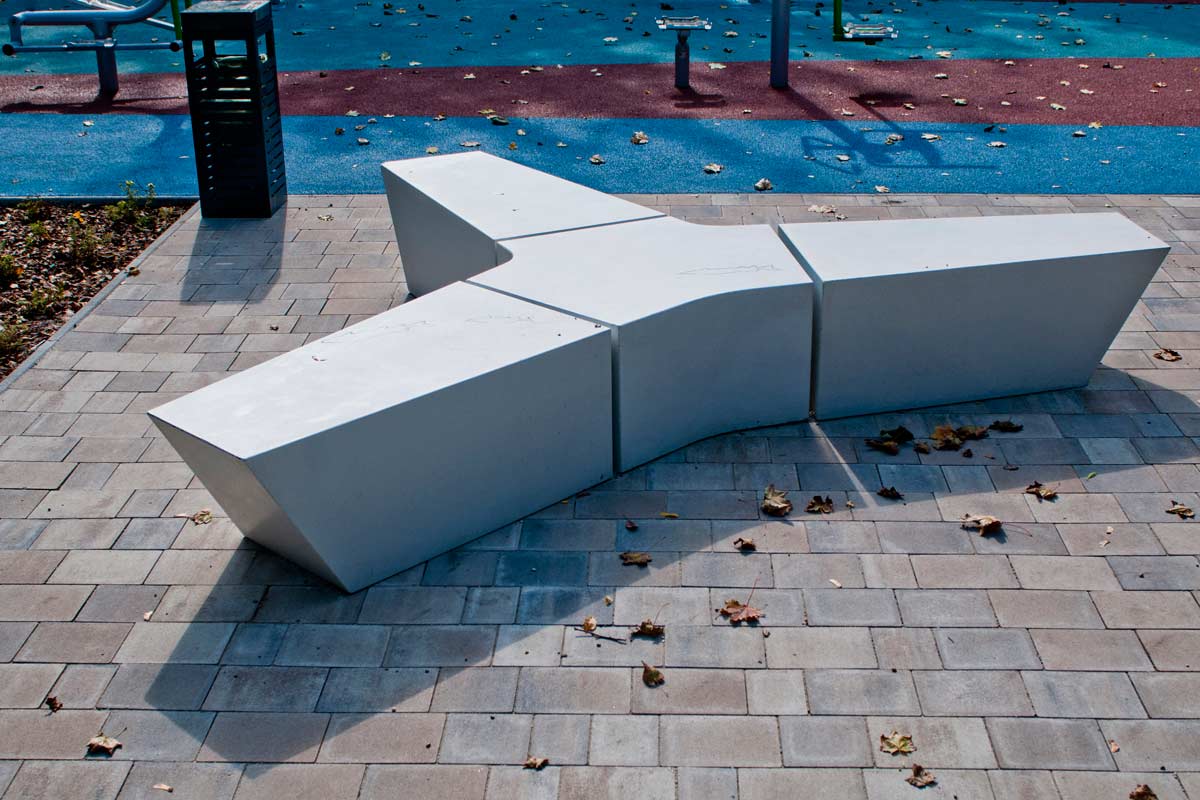In the renewal of urban furniture, GRC (glass fiber reinforced concrete) benches are gradually replacing metal and wooden benches with their lighter, more durable and more environmentally friendly characteristics. This change is not only due to the improvement of material performance, but also because it can solve the practical problems that traditional materials have long existed.
- Problems with traditional materials and GRC solutions
Metal benches: hot in summer and cold in winter
Temperature problem: Metal conducts heat quickly, and the surface temperature exceeds 60℃ after exposure in summer, especially in the Middle East, and it is too cold to sit in winter.
Easy to rust: Especially in humid or coastal areas, it is necessary to repeatedly paint to prevent rust, and the maintenance cost is high.
Single shape: The welding process limits the design and it is difficult to make complex shapes.

Improvements of GRC:
Good thermal insulation: The heat transfer performance of GRC is only 1/10 of that of metal, and it can maintain a comfortable temperature in all seasons.
Anti-corrosion and maintenance-free: No anti-rust treatment is required, and the surface can be used for more than 60 years after anti-fouling coating.
Wooden benches: good-looking but difficult to maintain
Easy to damage: easy to crack and deform after exposure to the sun and rain, need to be repainted every 2-3 years, and maintenance costs account for 30% of the total cost.
Afraid of moisture and insect infestation: prone to mold and insect infestation in rainy areas, shortening the service life.
Consumption of wood resources: high-quality wood requires deforestation, which is not in line with environmental protection trends.

Alternatives to GRC:
Imitation of wood grain effect: realistic wood grain is made through molds, the appearance and feel are close to real wood, but it will not rot.
Super durability: can withstand temperature changes from -30℃ to 80℃, and almost no maintenance is required.
- The core advantages of GRC benches
Light and strong: two-thirds lighter than traditional concrete, but stronger, with a load-bearing capacity of more than 260 kilograms.
Anti-seismic and anti-fall: the internal glass fiber disperses the impact force, and the impact resistance is 3 times that of ordinary concrete, suitable for earthquake areas.
Fire safety: It meets the A-level fire protection standard, will not burn when exposed to fire, and can also release moisture to delay the fire.
Environmentally friendly recycling: low carbon emissions in production, and can be crushed and reused after being discarded to reduce garbage.
As a city furniture manufacturer with more than ten years of experience, what kind of services can we provide for you?
Flexible customization
Provide a variety of surface effects such as imitation metal, imitation wood, and imitation stone to adapt to different scene styles.
Support complex shape + lighting design: for example, wavy benches with gradient lights, or luminous patterns with urban cultural symbols embedded in the backrests.


Intelligent function upgrade
Optional USB charging port and environmental monitoring screen (display temperature and humidity/air quality).
Install solar panels, automatically turn on the lights at night, and the light brightness can be intelligently adjusted according to the ambient light.
Full process service
From design to transportation and installation, 90% of the components are prefabricated in the factory, and 10 sets of seats are installed on site in one day.
GRC benches can replace metal and wood because they solve the old problems of “hot, rusty, and rotten”, while being lighter, more cost-effective, and more environmentally friendly. As an urban furniture service provider, we use customized design and intelligent upgrades to make public seating not only durable but also able to meet the diverse needs of modern cities.





